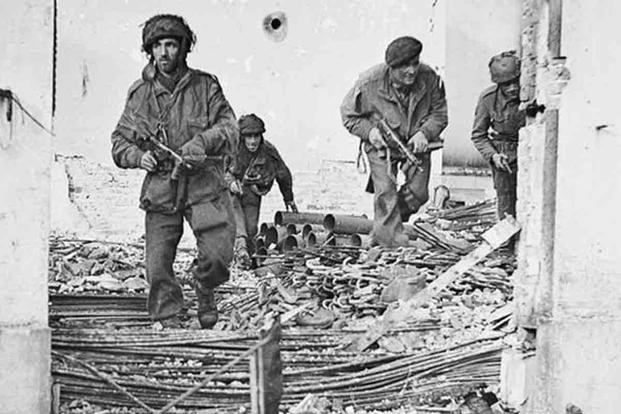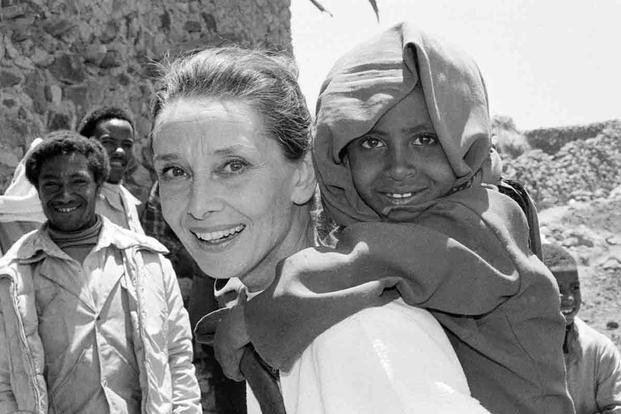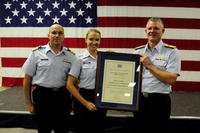Audrey Hepburn might be forever linked to the image of her character in “Breakfast at Tiffany’s,” Holly Golightly, with a cigarette at the end of a long black cigarette holder. For the actress herself, the day of her first cigarette held much more meaning. It was the day her village in the Netherlands was liberated from Nazi occupation by Canadian forces.
She didn't talk much about her experiences during World War II, but one biographer was listening. What she did say inspired Robert Matzen to look into what she did during the war and how it affected her, her career in Hollywood and the rest of her life. His 2019 book, "Dutch Girl: Audrey Hepburn and World War II," tells the story.
On April 16, 1945, the constant thunder of explosions around the Dutch village of Velp, near Arnhem, finally stopped. When Audrey realized what was happening -- or not happening -- the first thing she noticed was the smell of cigarette smoke. She and three other van Heemstra family members came out of their cellar hiding place to find friendly soldiers for the first time since Operation Market Garden some 211 days prior.

Audrey was so happy to see the Allies rolling through, she asked them for a cigarette, her first one ever. Although it made her choke and cough, she forever linked smoking with the jubilation she felt as she was finally liberated from Nazi Germany. It was a story she told the rest of her life. What she didn't tell is how she'd tried to help make this day come sooner.
Before the Nazi blitzkrieg captured the Netherlands in May 1940, Audrey's aristocratic mother, Baroness Ella van Heemstra, and her father, Joseph Ruston, were actually pro-Nazi and pro-Germany. Their young daughter, who had spent the first 10 years of her life in Belgium and Britain, was not. The Nazis toppled the Dutch government when Audrey was only 11 and living in Arnhem.
Dutch resistance began early, but ramped up slowly, beginning with workers strikes in 1941. The sentiments of her family changed, too, boiling over in 1942 when Audrey's uncle Otto, an aristocrat and judicial official, was arrested, imprisoned and executed in retaliation for an act of sabotage.
His remains were dumped in a mass grave. Her half-brother Ian was deported to Berlin to work in a forced labor camp, forcing her other half-brother to go into hiding. Any Nazi sympathies left in her mother died with Otto. The family moved out of Arnhem to the nearby village of Velp. There, she witnessed train cars of Dutch Jews being loaded and shipped out of Holland.
While following the future actress' work with the Dutch Resistance, author Robert Matzen recreated the local resistance network in Arnhem. Young Audrey wanted to be a dancer, and she danced in public performances, often with Nazis in attendance. All the while, she was working as an assistant to Dr. Hendrik Visser 't Hooft, the local resistance leader.
As a doctor, Visser 't Hooft knew he would get special treatment from the occupiers. He used children as messengers and delivery agents, because the Nazis usually ignored them. Audrey, a fluent English speaker, was the perfect messenger to aid downed Allied pilots. When the time came, she also helped shelter British paratroopers.
Arnhem was the site of the "Bridge Too Far," coined by the 1974 book and 1977 movie, where the British 1st Airborne Division attempted to secure a bridge across the Nederrijn River during Operation Market Garden. Only a small force reached the bridge, with the rest trapped in a pocket. Some managed to escape while the others fought to the end. During the Battle of Arnhem, Audrey brought a paratrooper into the family home to escape.
Like much of the Netherlands, things got worse before they got better for her family. After the D-Day landings of 1944, food and fuel restrictions led to a massive famine. Dubbed the "Hunger Winter" by the Dutch, food ran out and locals began using tulip bulbs to make food. The family's properties were damaged or destroyed, and Audrey began to suffer from the effects of malnutrition, including edema and anemia.

When the Canadian forces finally came rolling through Velp in April 1945, Audrey and her family were hiding in the same cellar that once hid their British paratrooper. Most of Central Arnhem was destroyed, so the family moved to Amsterdam to make ends meet and so Audrey could continue her career.
The young girl kept dancing and made her screen debut in a 1948 educational film. Her dancing took her to London, where she became a model and joined the Ballet Rambert company. The director of the company told her that her smaller stature and weakened immune system, the result of malnutrition during the war, meant she would never be a prima ballerina, so she focused on acting instead.
-- Blake Stilwell can be reached at blake.stilwell@military.com. He can also be found on Twitter @blakestilwell or on Facebook.
Keep Up With the Best in Military Entertainment
Whether you're looking for news and entertainment, thinking of joining the military or keeping up with military life and benefits, Military.com has you covered. Subscribe to the Military.com newsletter to have military news, updates and resources delivered straight to your inbox.

















